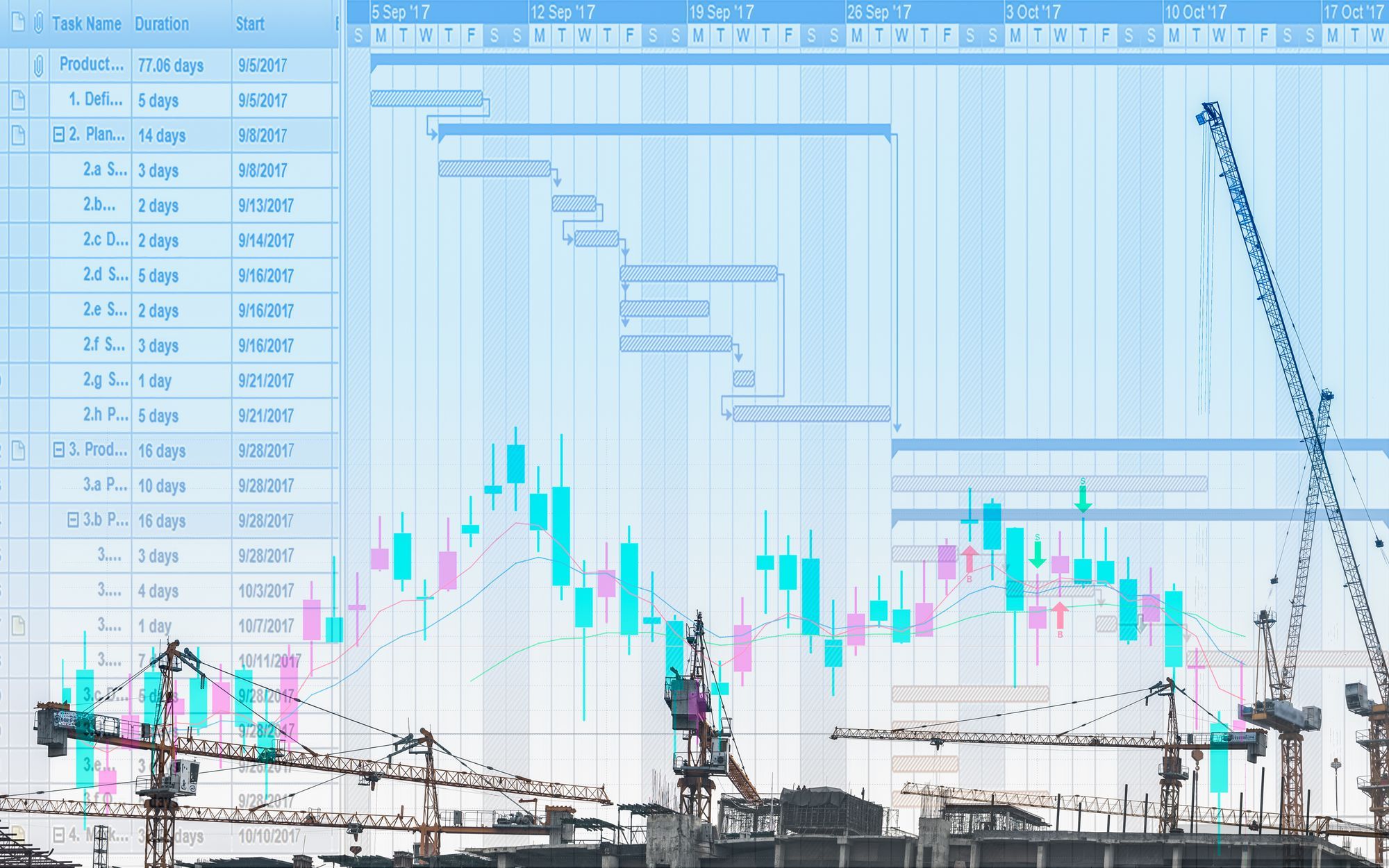Managing commercial construction has never been more difficult. Projects are increasingly complex, more players are involved (often trade contractors instead of old-school general contractors) and the industry is as litigious as ever. Meanwhile, scheduling technology hasn’t evolved to keep pace with the added complexity. This disconnect contributes heavily to creating two key problems facing construction project stakeholders: overruns and delays.
An alarming 75% of commercial construction projects are delayed or overbudget, often due to mismanagement of construction schedules. But those schedules also hold the potential solution. Construction companies unwittingly collect significant amounts of valuable data through scheduling tools such as Primavera P6 or MS Project. Now all that’s needed is a simple way to make sense of it all—to understand where projects went wrong and how to avoid those mistakes in the future.
The disconnect lies in the fact that most of the industry believes “scheduling” means creating a baseline schedule and updating it on a monthly basis. In reality, scheduling is much more complex than that. Below are five reasons every construction manager or general contractor should be doing more than just building baselines and updating them.
1.Generally, most construction schedules aren’t strong enough to manage a job effectively. According to data collected by SmartPM, 70% of project schedules receive lower than a “B” grade. Such schedules are typically unreliable for managing a job effectively and, worse, are not of a quality level where the data can be effectively analyzed. Data also makes it evident that scheduling in construction is completely misunderstood.
2.When updating schedules, the focus tends to be on making logic and duration changes rather than creating a realistic schedule. Project schedulers rarely have the time to study performance data, challenge durations, question the sequencing, review performance history, meet with subs and then adjust the schedule to be realistic and achievable — regardless how aggressive the project manager wishes the schedule to be. Unfortunately, most schedulers’ time is spent trying to get the end date back in as quickly as possible, and at the last minute, every month. For example, one scheduler who is considered exceptionally skilled and works at one of the largest construction management firms in the nation, is currently managing 12 large commercial projects at one time, each with more than 1,000 activities. This gives the scheduler a day or two, at best, to update each one, and he is also attempting to incorporate a pull-planning process on each project, too. He has no time to talk to anyone, study performance history or even double-check his logic. A top-notch job just can’t be done under these conditions.
3. Understanding performance is more important than reporting progress. The more the intricate details of the data contained in the schedule are studied, the more is known about the job, and the better projects can be managed to successful completion. Yet that takes reviewing historical durations, studying logical flows and identifying critical path delays and missing logic. This in-depth analysis makes it possible to extrapolate likely future scenarios and critical paths, repair schedule deficiencies and update the go-forward plan with confidence that it could be achieved — and an owner could confidently rely on it to run the business. Given the time-consuming and expensive nature of this process, though, it doesn’t happen often.
4.Overconfidence bias is at the root of the schedule management and updating problem. Planning fallacy is a major problem in project management in all industries. People are wired to believe that they can accomplish more in less time than is humanly possible. In construction, which has large and complicated schedules, the planning fallacy issue is compounded. And it gets worse every time a schedule is updated. It makes sense that, if activity durations are, on average, shorter than what’s realistic, sequences of activities will have a compounding effect of misrepresentation. This is further compounded at each update when logic has been removed and durations are shortened to combat inevitable delay. Ironically, the overconfidence bias results in an unreliable schedule that no longer inspires confidence at all. An unreliable schedule and inaccurate critical path are misleading to stakeholders, detrimental to productivity and still result in delays — a triple whammy that usually ends in a dispute.
5.Fear of legal disputes is a real problem. If a project is inevitably going to be delayed, it is inevitably going to be overbudget. Delays don’t come without a cost, including added project costs, extended general contractor costs or lost revenue. Understanding the schedule is the only reliable way to capture what really happened, and most schedules are poorly constructed and compressed beyond recognition. The result is a lot of finger-pointing, litigation and large fees to consultants and lawyers.
One way to resolve all these challenges is to use schedule analytics technology. It can improve the schedule mismanagement problem in construction by importing schedule file data and analyzing schedule quality, integrity, critical path delay, compression and feasibility. Schedule analytics technology also forecasts realistic completion dates and forces accountability across all stakeholders. Without it, the challenges that the construction industry has faced for years will continue to accelerate, keeping pace with the complexities all stakeholders face on their projects.







